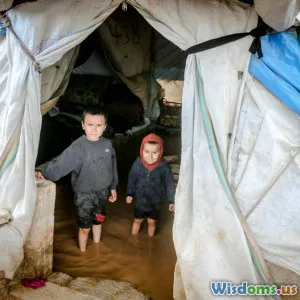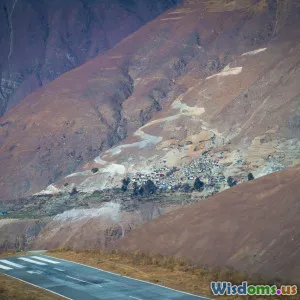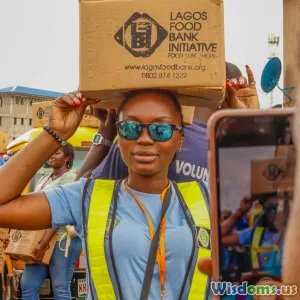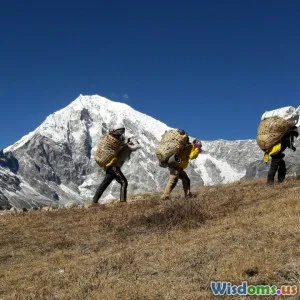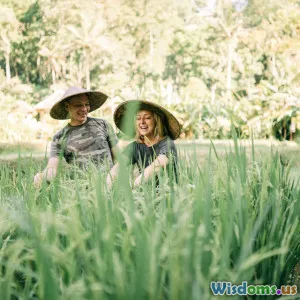
Why Female Volunteers Are Leading Sustainable Projects in Southeast Asia
8 min read Explore why female volunteers are becoming frontrunners in sustainable projects across Southeast Asia. (0 Reviews)
Why Female Volunteers Are Leading Sustainable Projects in Southeast Asia
Southeast Asia stands at the crossroads of rapid development and environmental vulnerability. Navigating challenges such as deforestation, climate change, and urban expansion requires innovative, resilient solutions. Surprisingly, the driving force behind many grassroots movements for sustainability is increasingly powered by female volunteers. Their leadership is reshaping how communities engage with environmental stewardship, blending cultural wisdom with modern sustainability practices. But why are women emerging as pivotal leaders in this region's sustainable projects? This article unravels the factors behind this trend, showcasing inspiring stories and shedding light on the transformative impact of female-led volunteerism.
The Rising Tide of Female Leadership in Sustainability
Historically, development projects—especially in environmental conservation—often sidelined women, ignoring their unique perspectives and capacities. However, in Southeast Asia, women now represent nearly 60% of volunteers in sustainable development according to a 2022 Southeast Asia Environmental NGO report. This shift owes much to changing societal attitudes and targeted empowerment initiatives.
Cultural Foundations and Women’s Unique Roles
In many Southeast Asian cultures, women traditionally play central roles in managing household resources—water, food, and energy. This intrinsic connection to natural resources positions them well for sustainability leadership. For example, in Bali, Indonesia, village women collectively manage local water irrigation systems known as subak, a UNESCO-recognized heritage.
Such traditional roles have extended into volunteer projects focused on sustainable agriculture and water conservation, where women leverage their indigenous knowledge effectively.
Education and Skills Development
Enhanced access to education has enabled women in countries like Vietnam, Thailand, and the Philippines to pursue skills relevant to environmental science, community organizing, and project management. Organizations like the Women’s Earth Alliance (WEA) provide training and support to female environmentalists, resulting in remarkable community-based initiatives.
Example: The WEA-supported project in the Philippines led by 28-year-old female volunteer Maricel Javier harnesses bamboo cultivation for sustainable building materials, which reduces reliance on deforestation.
Government and NGO Support
Southeast Asian governments increasingly recognize the role of women in sustainable development, incorporating gender perspectives into policies. Meanwhile, NGOs actively recruit and train female volunteers for community projects, further opening leadership pathways.
For instance, Singapore’s Samova initiative actively promotes female participation in urban farming projects, combining sustainability with economic empowerment.
Real-World Impact and Project Highlights
To showcase the leadership of female volunteers, here are notable projects that illustrate their contributions.
1. Mangrove Restoration in Southern Thailand
Mangroves provide critical coastal protection and support biodiversity but face degradation due to aquaculture and urbanization. In Phang Nga Province, a group of female volunteers, led by environmental scientist Dr. Natchaya Somboon, spearheaded a mangrove restoration campaign.
Through a blend of community education and hands-on planting sessions, this initiative has restored over 500 hectares, improving local fisheries and buffering storm surges.
2. Waste Management Innovation in Hanoi, Vietnam
In Vietnam’s capital, female volunteers with the organization Green Earth Hanoi have launched initiatives to reduce single-use plastics. Volunteer Nguyen Thi Hoa created workshops teaching low-income families to repurpose plastic waste into marketable crafts.
This approach not only fosters sustainability but generates supplementary income, illustrating the social-economic benefits of volunteer-led environmental action.
3. Sustainable Tourism in Cambodia
Volunteer groups prioritizing eco-tourism are led predominantly by women in Siem Reap, near Angkor Wat. These volunteers develop sustainable tourism models that protect historical sites while enriching local communities.
Say Sokha, a 34-year-old coordinator, shares, "We involve women in the community to craft and sell eco-friendly souvenirs and organize guided nature tours, which empower them economically and raise awareness of conservation."
Why Female Leadership Makes a Difference
Research and experience reveal several reasons female volunteers excel as sustainability leaders.
Empathy and Community-Centric Approaches
Women’s approaches often center on collaboration and inclusivity. This nurtures community buy-in, vital for long-term success. Female volunteers excel at bridging communication gaps between stakeholders.
Multitasking and Resilience
Balancing family, social duties, and volunteer work, female leaders demonstrate resilience and adaptability—qualities indispensable when navigating the uncertainties of grassroots projects.
Networking and Advocacy Skills
Women tend to build expansive networks, leveraging social capital. This helps attract resources, influence policymaking, and amplify impact.
Dr. Chanita Lee, a sustainability consultant working across Southeast Asia, notes, "Female-led initiatives often have more sustainable outcomes due to their participatory nature and attention to social dynamics."
Challenges Faced by Female Volunteers
Despite progress, challenges persist:
- Cultural barriers: In some rural areas, conservative attitudes limit women’s leadership opportunities.
- Limited funding: Female-led projects sometimes struggle more to secure financing.
- Balancing multiple roles: Societal expectations place additional burdens.
Addressing these challenges requires continued advocacy, policy support, and inclusive funding models.
How to Support and Empower Female Volunteers in Southeast Asia
Promoting female leadership in sustainability requires concerted efforts:
- Invest in education and leadership training programs.
- Encourage gender-sensitive project design.
- Promote mentorship networks pairing experienced female leaders with new volunteers.
- Support policies that ensure women’s voices in environmental governance.
International volunteers, donors, and policymakers can amplify impact by fostering environments where female volunteers thrive.
Conclusion
The surge of female volunteers leading sustainable projects in Southeast Asia exemplifies a transformative wave in environmental action. Grounded in cultural tradition, empowered by education, and motivated by an intricate understanding of community needs, their leadership is fostering resilient, innovative solutions at a critical juncture. Recognizing and bolstering female volunteerism is not just a matter of equity but a strategic imperative to tackle ecological and social challenges comprehensively. As the region mobilizes to protect its rich natural heritage, female volunteers are not only participants but visionary leaders lighting the path toward a sustainable future.
Whether you are a policy advocate, an aspiring volunteer, or simply an environmentally conscious citizen, learning from and supporting these women could be your first step toward meaningful impact in Southeast Asia and beyond.
For further reading, explore initiatives by Women’s Earth Alliance and local community-based organizations shaping sustainable futures.
Rate the Post
User Reviews
Popular Posts












